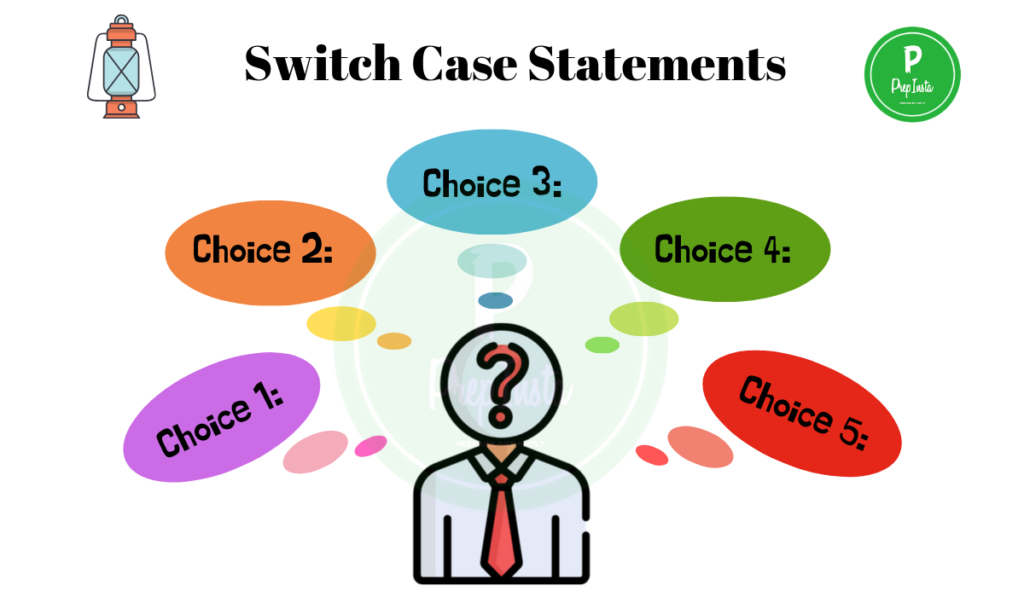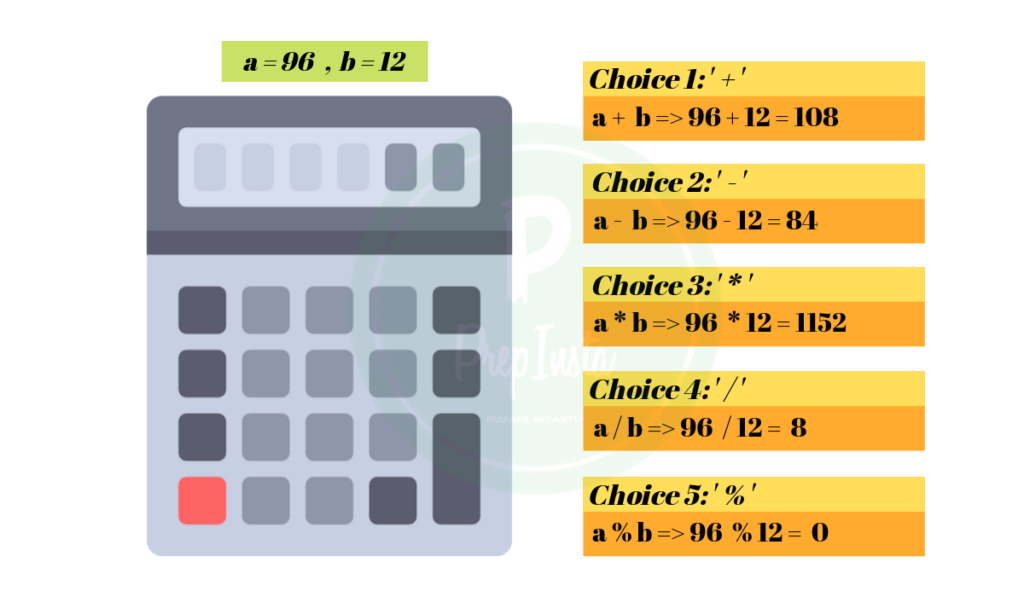Switch Statement: Case based Instructions
Understanding the Concept
- A Switch case statement is a control statement that allows us to make a decision from a number of given choices called Switch.
- There are certain rules that need to be kept in mind while working with a switch statements.
- Case values can never be conditional.
- Every case must be a constant value or an expression.
- Every case label must be unique
- Float values can not be used.
- The case label is terminated by colon(:) and statement in every case must be terminated by semi colon(;).
- Break keyword is used at the end of each case statement.

Examples of Switch Statement
The Most basic example of a Switch case statement is to design a calculator which can perform basic operations ,i.e, addition,subtraction, multiplication and division.
Let us first understand how the Calculator works.
- In a calculator we are given certain choices of operations.
- Out of the given choices, the user is to select on and that operation is then executed.
Now we shall look at the program to implement calculator operations.
#include
int main()
{
int a,b;
float res;
char c;
printf("Enter first number: ");
scanf("%d",&a);
printf("Enter second number: ");
scanf("%d",&b);
printf("Choose operation to perform (+,-,*,/,%): ");
scanf(" %c",&c);
res=0;
switch(c)
{
case '+':
res=a+b;
break;
case '-':
res=a-b;
break;
case '*':
res=a*b;
break;
case '/':
res=(float)a/(float)b;
break;
case '%':
res=a%b;
break;
default:
printf("Invalid operation.\n");
}
printf("res: %d %c %d = %f\n",a,c,b,res);
return 0;
}

Output:



